On the tiger trail in India: ‘I simply couldn’t move from visceral terror’
2024 marks 130 years since Rudyard Kipling’s ‘The Jungle Book’ was published. Rupert Uloth has been inspired by that to go on his own tiger trail in India; he journeyed to India and Suján Sher Bagh in search of his own Shere Khan.


Day one
‘I was completely paralysed by the tiger’s roar. I simply couldn’t move from visceral terror.’
We let these words sink in as we sit around the flickering campfire at Suján Sher Bagh. We know that in the morning we may experience a similar sensation: even after decades of guiding, Yusuf remains in awe of these creatures that so impressed Rudyard Kipling when he wrote The Jungle Book almost 130 years ago.
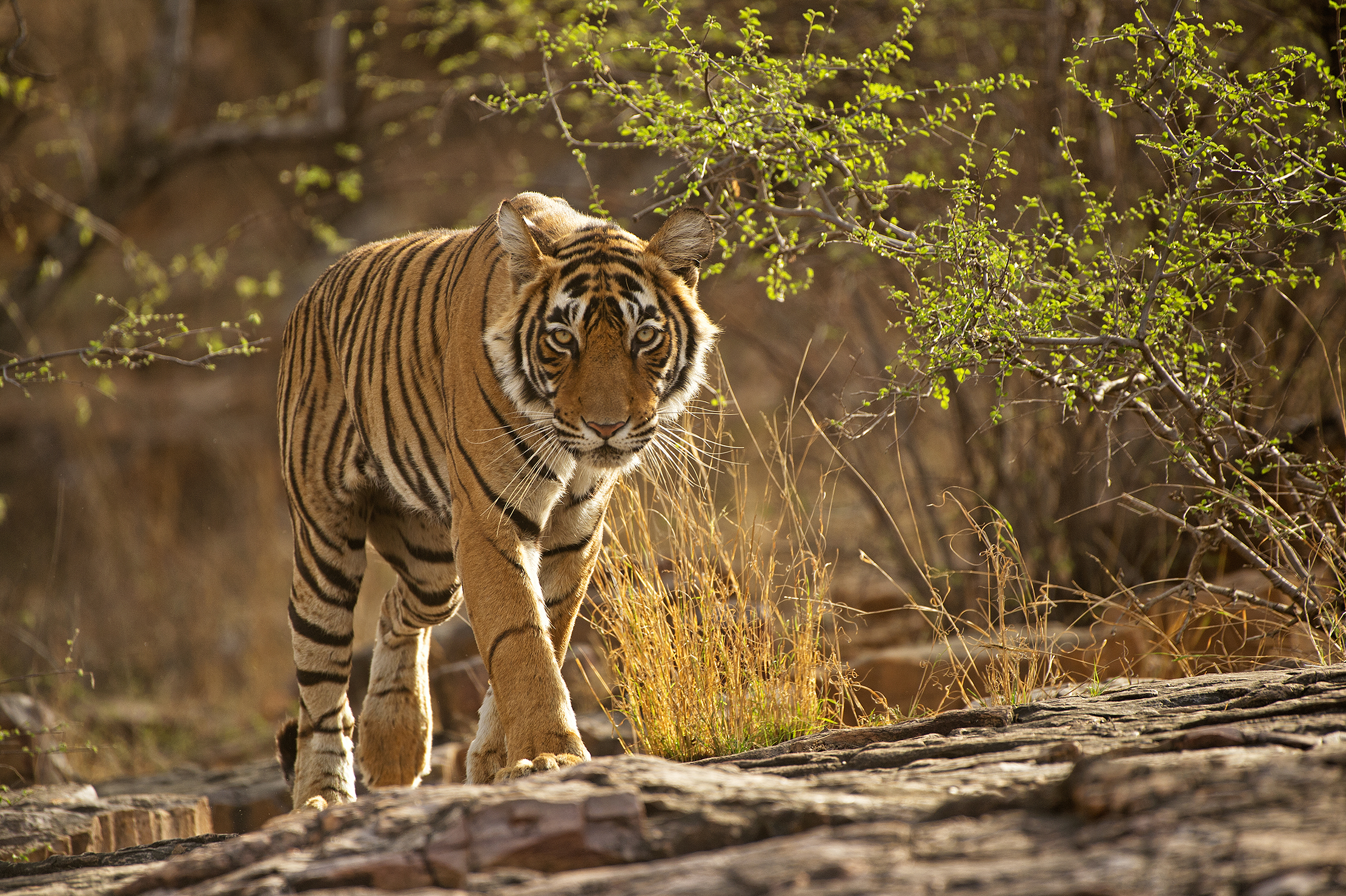
Clearly, the thrilling prospect of spotting our first tiger in the wild now has an edge to it. We are excited to meet our very own Shere Khan.
Suján Sher Bagh (below) is the dream made true of owner Jaisal Singh. His parents first came to Ranthambore when it was only a dusty winding track.
They filmed and documented some of the first footage of wild tigers there and magnificent giant photographs adorn the walls of the camp that would be the envy of a Raj-era Viceroy, with its luxurious tented rooms furnished in perfectly judged colonial style.

We enter the park in an open-topped jeep with Yusuf, who, with his impressive and immaculately coiffed moustache, looks every inch an Indian prince, but whose rounded public-school vowels reveal an education at Stowe and time spent with the Coldstream Guards.
We are also accompanied by a driver and a spotter-cum-tracker. As recently as the 1970s, this was a maharajah’s hunting ground, but now it is a conservation haven where 78 tigers are living wild.
Exquisite houses, the beauty of Nature, and how to get the most from your life, straight to your inbox.
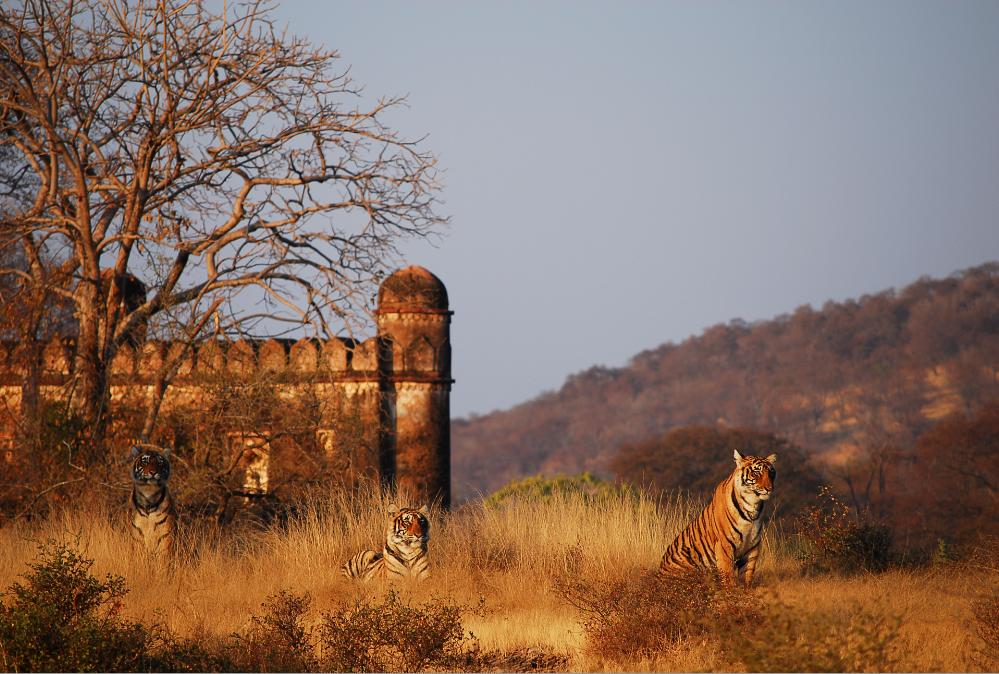
Passing under the ancient Mughal gateway in the narrow gorge, we are immediately aware of a different world. We can see why those fearsome warriors built their fortress here: almost impregnable, it is also teeming with Nature and animals.
A population of 40,000 was recorded in the 16th-century living in the fort that covered four square miles. Now it is home only to the animals and birds.
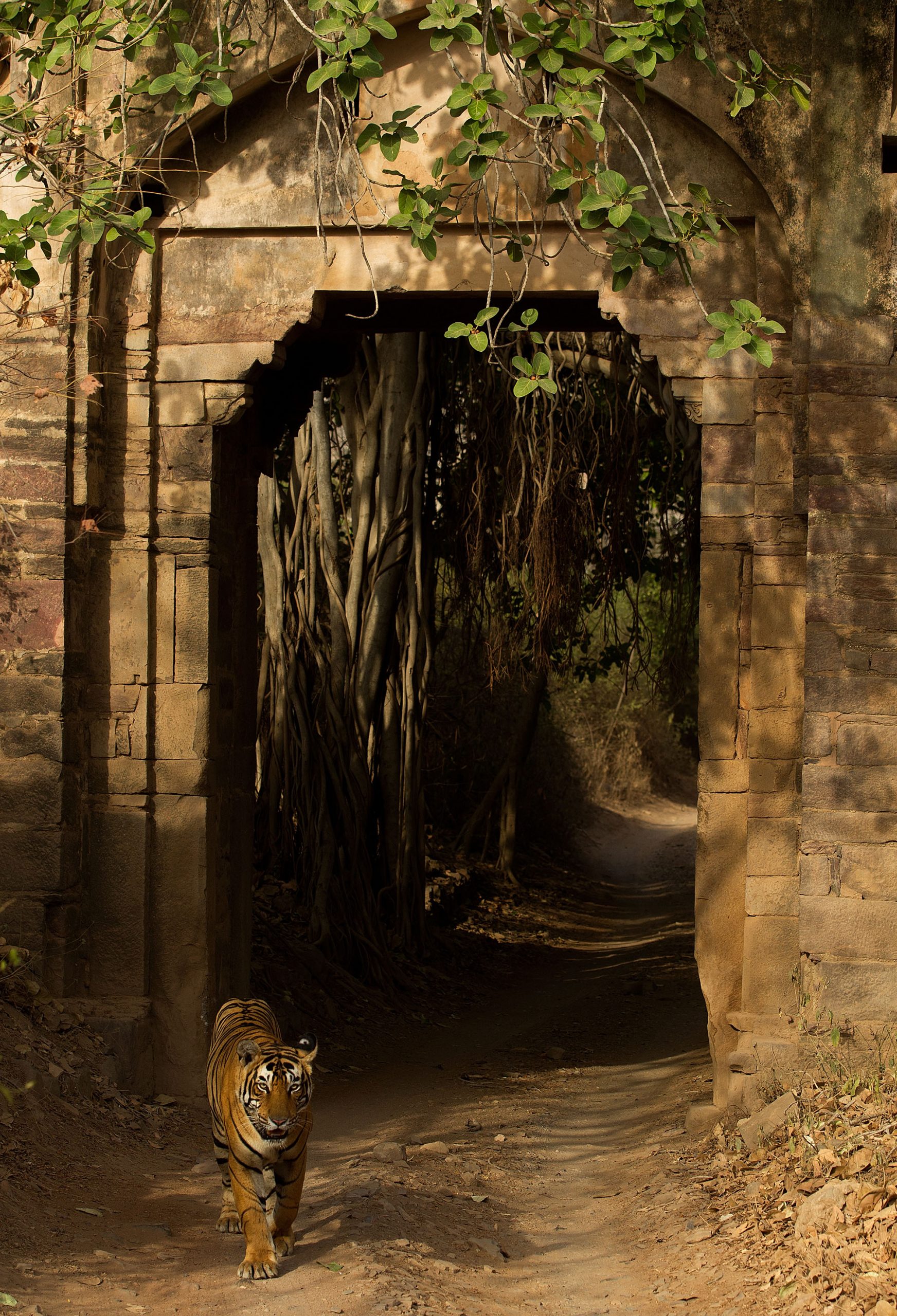
There are no deer visible in the dried-up river bed. ‘An indication that predators are about,’ explains Yusuf. On the way in, the park ranger tells us he has heard a pair of tigers roaring at each other. But we keep moving: tigers move about much more than lions.
As the sun sinks, the bird chatter increases. Francolin, barbet, grey partridge and plum-headed parakeets among them. A rufous treepie, the size of a dove, boldly sits on my shoulder for some of the ride.
We don’t find a tiger, but we do find Mr Singh’s white bearded uncle, Valmik Thapar, in another vehicle. He has devoted his life to tiger conservation: supporting the park authority in involving the local community, ensuring the right habitat exists and monitoring poachers. The latter is a constant threat, with a single tiger worth up to $1 million (about £802,000) on the black market. Tracking devices are vulnerable to being hacked and tagging is dangerous, as the active animals would harm themselves.
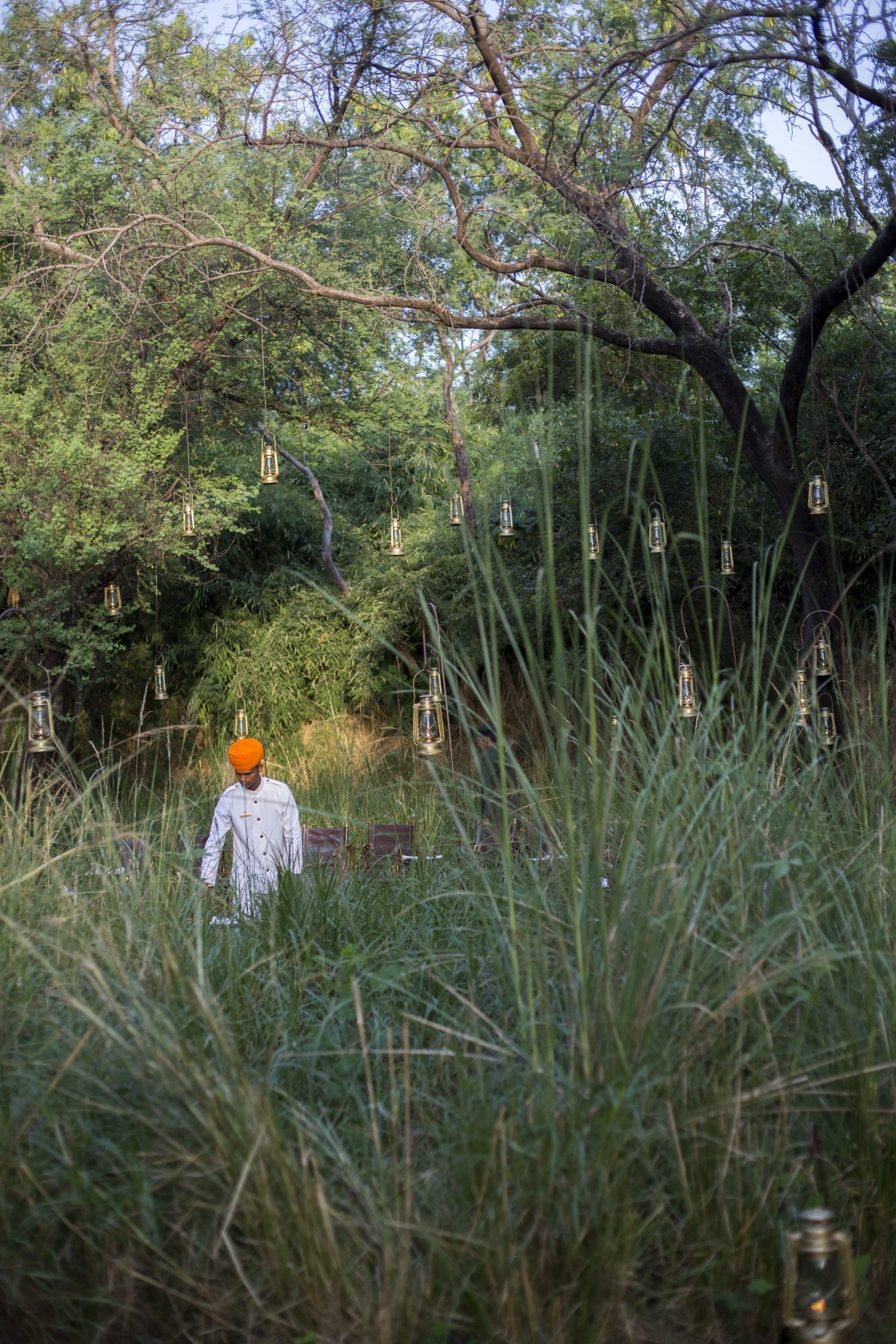
On our return to camp, Ajay, our attentive butler, warns us not to open the door to our room in the morning if we hear a scratching, only if we hear a knocking. He has a wry smile, but tiger, honey bear, jackal and hyena have all been known to roam through the camp at night.
Day two
We are woken at 5.45am and escorted from our tent as dawn is breaking. We are in Zone Two of the park and the ancient fort is high above us. There is evidence of ruins everywhere, even on the valley floor. We spot a beautifully carved stone 13th-century tomb lid sitting askew among the trees. But our attention is soon taken by tiger tracks.
As we begin to move off, we see a leopard bound in front of us. Yusuf is excited, because leopards usually stay hidden in the mountain tops to avoid the rapacious tigers. We rediscover this beauty a few yards off the track, perched on a rock. She gazes at us intently with eyes shining like molten gold and we enjoy several minutes contemplating her lithe and muscled form before returning to our main task.
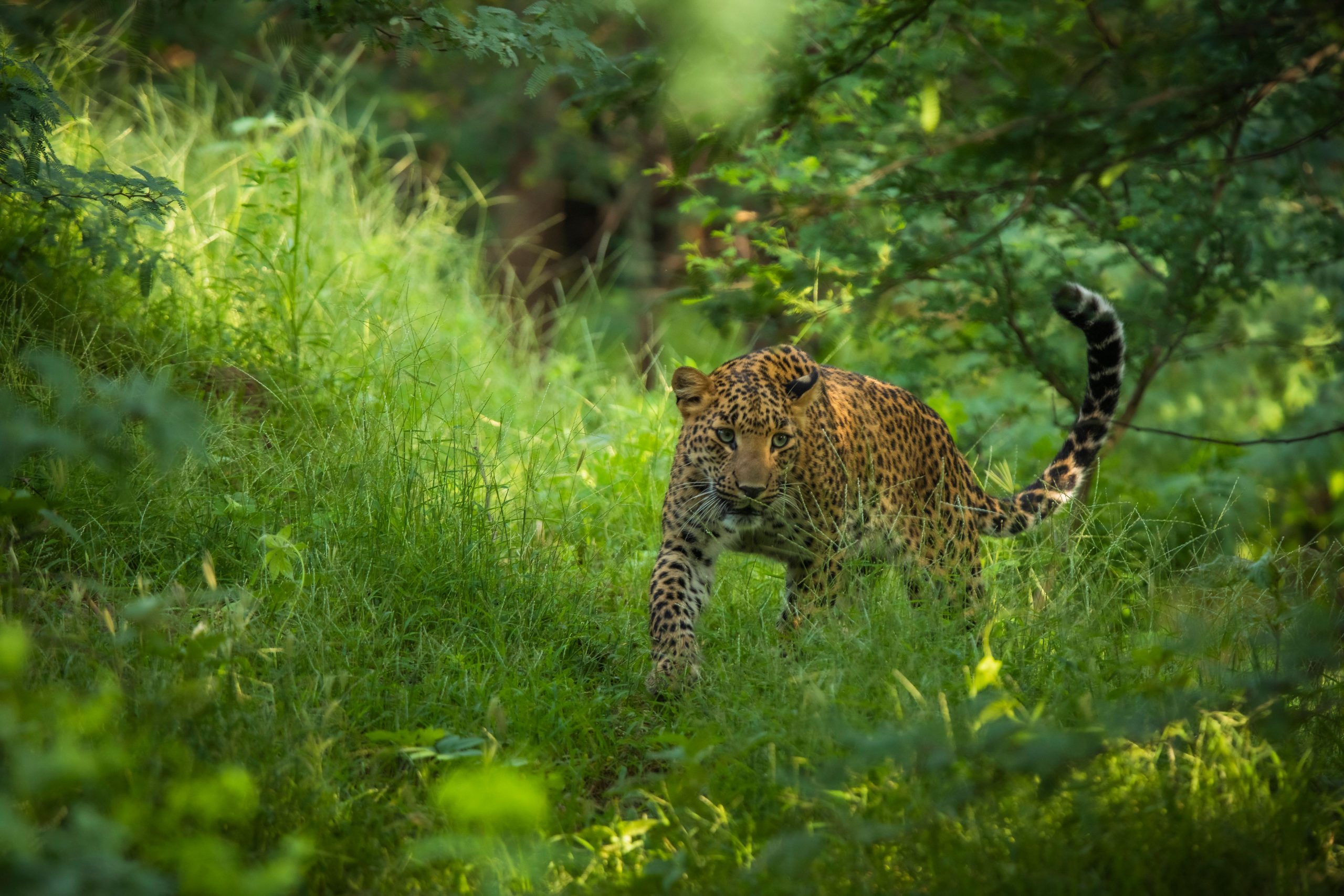
It is just as well we have three experts looking for signs of tigers, as we are constantly distracted by the wonder of the other fauna and varying flora. Two breeding pairs of kingfisher glint in the foliage of a tree overhanging a river, a white-breasted stork eyeing them curiously.
Peacocks are everywhere, flying or simply strutting around among the trees; vultures have successfully been introduced and six circle ominously in concentric rings. We marvel at the wingspan of a brown fish owl, its wingtips stretching the width of the track as it swoops away from us, the feathertips looking like they have been dipped in black ink.
Day three
Today, we are in the area of the lakes. No one is allowed in what was once a palace on an island, with its lapis-tiled fountains. Yusuf tells us of a man spending the night there during the annual tiger census and leaping off the balcony in fear. If he had done that when we were there, he would have landed on a crocodile sunning itself nonchalantly on the shore.
We stop for tea under a sweet-smelling banyan tree and spot a flat-shelled turtle on a rock. Monkeys are munching on tamarind seeds in the branches above. We are tracking a young female tiger we have heard has come into the area and the sambar deer’s alarm call suggests we may be close. ‘We may not have seen a tiger today,’ says Yusuf, ‘but we have heard a sambar deer, who has seen a tiger.’
Back at camp during lunch, fellow guest Raoul, an Ampleforth-educated young entrepreneur working in AI, tells us how he and his girlfriend saw a tiger chase a leopard past them and then circle their vehicle. We feel sure that we are going to be lucky with a sighting, too, but time is running out.
After a swim in our private pool and a deep soak in the outdoor bath of our Royal Suite, we enjoy an evening in front of the campfire listening to a local folk band, sipping cocktails and staring out into the black night of the forest.
Day four
Our last day. Although it has been an absolute pleasure exploring this historic park and enjoying the wealth of wildlife with an expert guide, we know that it will be a disappointment if we don’t spot ‘the big one’. A mother and her three sub-adult male cubs are in the area. We race to the far end of the park and find fresh tracks.
Where the world’s oldest mountain range (with its craggy sheer cliff faces, similar to the Dolomites) meets the world’s youngest range (imagine the South Downs covered in vegetation), there is a flat plain where we pause for fresh lime and lemon drinks and cake, but still no sign, even around the waterholes.
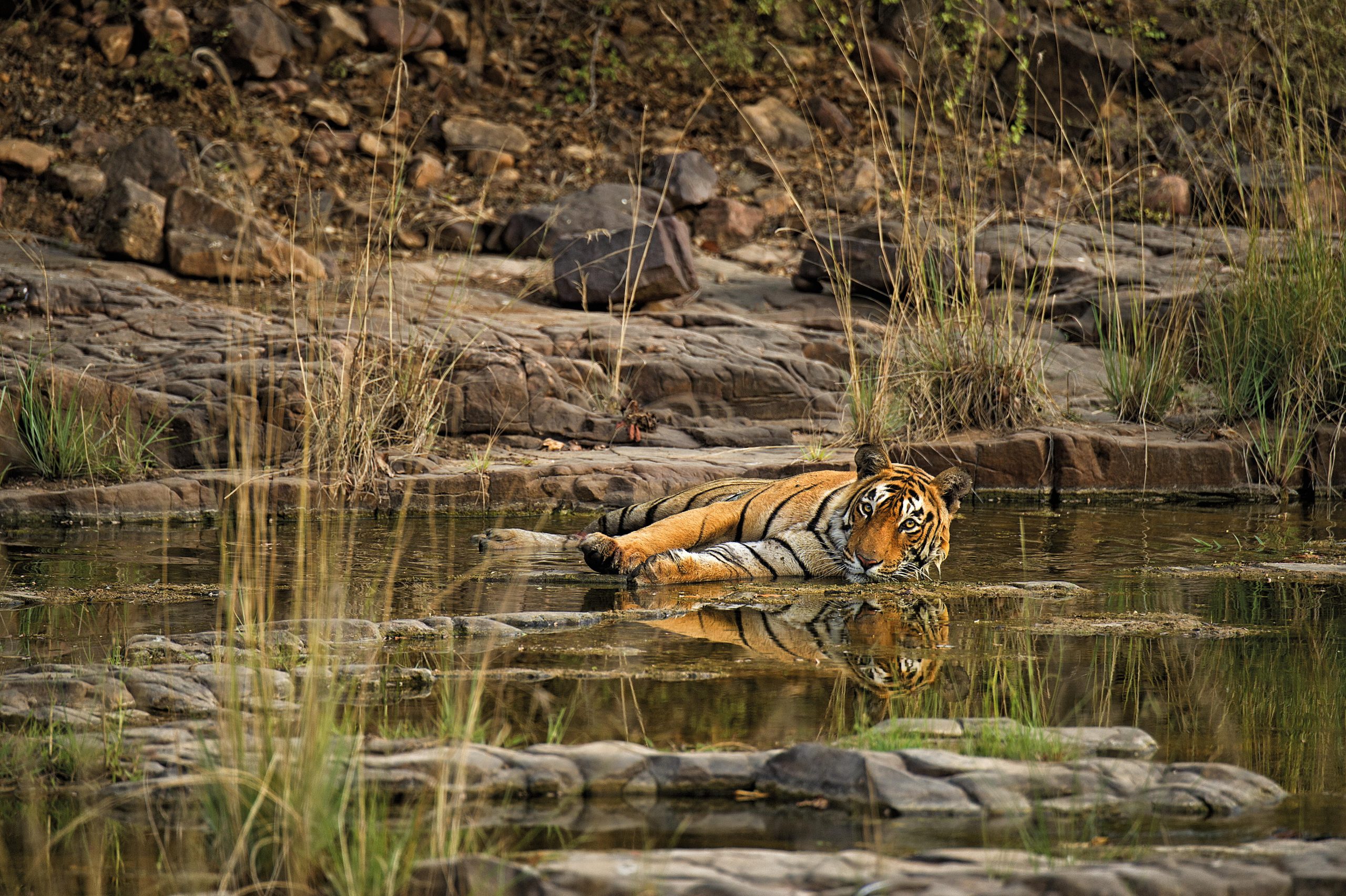
The sun is beginning to drop and we meander our way back towards the entrance to the park. Suddenly, Yusuf spots an orange glimmer among the foliage. It takes some time for us to see where he is looking, but when we do, there is the unmistakable rich ochre of a tiger skin.
It’s more than enough, but then a young male suddenly appears on the river bank looking like a teenager who has just crawled out of bed after an all-night rave. He eyes us blearily for a minute or two before padding along and prostrating himself, regally regarding us across from the river.
Our first proper sighting of a tiger in the wild and one of only 5,000 worldwide.
‘We saw him in the last ball of the last over,’ says an elated Yusuf. We then have to drive like we are being chased by a man-eater — perhaps we are? — to beat the park’s deadline of 6pm, when the gates are closed. Our hearts pound with excitement and relief.

Rupert Uloth’s tiger trail itinerary
The Oberoi, New Delhi
Our enormous bedroom window lent sweeping views of the surrounding golf course and Lutyens’s magnificent parliament buildings in the distance. Country Life’s architectural inspiration is celebrated in the restaurant’s spider-backed chairs. The roof-top terrace is filled at night with New Delhi’s bright young things and, when we met acclaimed author and India expert William Dalrymple in a city park, he unhesitatingly suggested we retire to the Oberoi’s cocktail bar. A brilliant place to start or finish an India tour.
Suján Sher Bagh
The Royal Suite has its own outdoor luxury bathtub and private plunge pool. There is a library with a wide range of books, including big-game classics, such as those authored by Jim Corbett. Meals can be taken by the campfire, at colonial camp tables under the stars or in luxurious comfort by the bar.
Transport
Scott Dunn offers a stay at Suján Sher Bagh, Ranthambhore as part of a nine-night trip to India, from £7,100 per person, based on two adults sharing. The trip includes two nights at The Oberoi New Delhi on a B&B basis, four nights Suján Sher Bagh on a full-board basis, three nights at Amanbagh, Alwar, on a full-board basis and one night at The Oberoi, Gurgaon, on a B&B basis, return flights from the UK, six game drives at Suján Sher Bagh and private transfers.
Phone 020–8682 5060 or visit www.scottdunn.com for more information.

Scottish Wildcats: Six things you should know about the 'Highland Tiger' and how it's fighting for survival in 21st century Britain
Once widespread across the British Isles, there are now fewer than 100 pure Scottish wildcats left. Joe Gibbs considers whether
